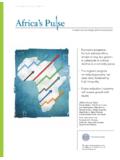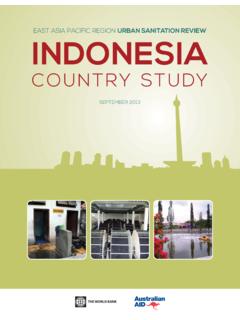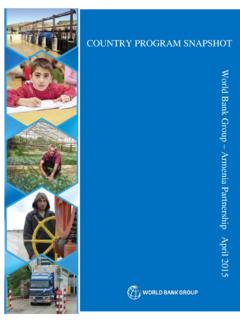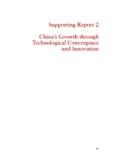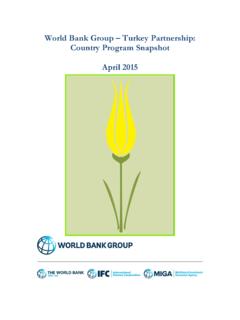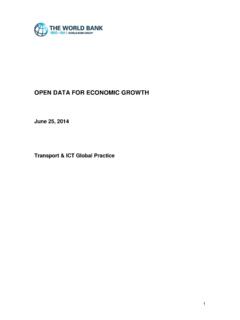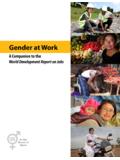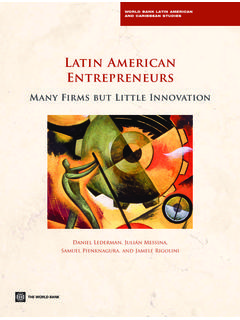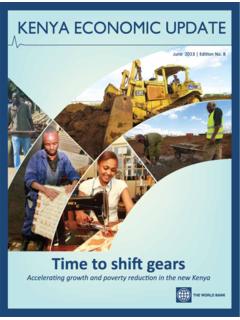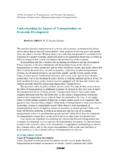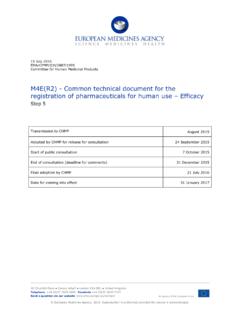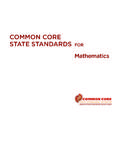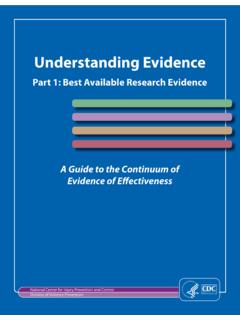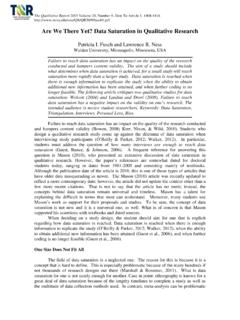Transcription of Business Enabling Environment (BEE) - World Bank
1 1 Pre-Concept Note Business Enabling Environment (BEE) February 4, 2022 Section I. Objective and Principles of the Business Enabling Environment (BEE) Project On September 16, 2021, the World bank Group (WBG) Senior Management decided to discontinue the Doing Business (DB) report and data and also announced that the WBG would work on a new approach for assessing the Business and investment climate. The new approach would improve on its predecessor and be informed by advice from experts in the WBG, as well as the recommendations from qualified academics and practitioners outside the institution, including the External Panel Review on DB methodology.
2 Its design will also take into consideration the views of potential users in government, the private sector, and civil society through an open consultative process. The new benchmarking exercise will be developed in the Development Economics (DEC) Global Indicators Group (where DB used to be housed). This Group will design, pilot, and implement the new benchmarking exercise, under the guidance of the WBG Chief Economist and DEC Senior Vice President. The data collection and reporting process will be governed by the highest possible standards, including sound data gathering processes, robust data safeguards, clear approval protocols, transparency and public availability of granular data, and replicability of results.
3 The objectives and principles of the new project for benchmarking the Business Environment around the World are as follows: A. Working Title. The working title of the new project is Business Enabling Environment , with the acronym BEE. The title will be refined after due consideration for branding impact. B. Intended Output. The objective of this benchmarking exercise is to provide a quantitative assessment of the Business Environment for private sector development. This quantitative assessment will produce granular data and a report based on these data, published with regular annual frequency and covering most economies worldwide.
4 Private sector development is here defined by three characteristics: it promotes economic growth through innovation and entrepreneurship;1 it increases equality of opportunities among market participants;2 and it ensures the general sustainability of the economy in the long Private sector development is driven by the efforts and ingenuity of private entrepreneurs but is critically affected by a range of public policies and regulations that create a conducive Business Environment . This incentivizes the start-up of new firms, 1 World bank . 2004. World Development Report 2005: A Better Investment Climate for Everyone. Washington, DC: World bank .
5 Commission on Growth and Development. 2008. The Growth Report: Strategies for Sustained Growth and Inclusive Development. Washington, DC: World bank . La Porta, R., and Shleifer, A. 2008. The Unofficial Economy and Economic Development. Brookings Papers on Economic Activity 47 (1): 123-135. Dabla-Norris, E., Ho, G., Kochhar, K., Kyobe, A., and Tchaidze, R. 2014. Anchoring Growth: The Importance of Productivity-Enhancing Reforms in Emerging Market and Developing Economies. Journal of International Commerce, Economics and Policy (JICEP), World Scientific Publishing Co. Pte. Ltd., vol. 5(02), pages 1-29. 2 World bank . 2005. World Development Report 2006: Equity and Development.
6 Washington, DC: World bank . 3 World bank . 2003. World Development Report 2003: Sustainable Development in a Dynamic World -Transforming Institutions, Growth, and Quality of Life. Washington, DC: World bank . Commission on Growth and Development. 2008. Ibid. United Nations Conference on Trade and Development. 2020. Entrepreneurship for Sustainable Development: Report of the Secretary-General. Pursuant to General Assembly resolution 73/225. New York: United Nations. 2 the facilitation of existing businesses, the creation of good jobs, and the transition of informal to formal C. Development Purpose. BEE s granular data and summary report will aim to achieve a twofold purpose: (1) to advocate for policy reform and (2) to inform economic research and specific policy advice (Figure 1).
7 Figure 1. BEE Twofold Purpose towards Private Sector Development Therefore, BEE will first aim to promote economic reforms, opening the door for knowledge sharing and policy dialogue for governments, civil society (including the private sector), the WBG, and other development institutions. Second, BEE will provide granular data that can be used for social and economic research and for specific policy advice where detailed information is required. Through its focus on private sector development, BEE should effectively contribute to meet the WBG twin goals of eliminating poverty and boosting shared Ultimately, the BEE data and reports aim to be a global public good that is useful to institutions and individuals interested in social and economic development around the World .
8 D. Scope. The Business Environment can be defined as the set of conditions outside a firm s control that have a significant influence on how businesses behave throughout their life This set of conditions can be very large, from macroeconomic stability to microeconomic regulations. To differentiate the BEE benchmarking exercise from other well-established international measures, the proposal is to concentrate on the regulatory framework and public service provision at the microeconomic level (Figure 2). Microeconomic regulations and services refer to those that are enacted and/or implemented to directly affect firms behavior and performance, as well as those of their markets and 4 De Soto, H.
9 1989. The Other Path. Harper and Row Publishers Inc., New York. Loayza, N., and Serv n, L. 2010. Business Regulation and Economic Performance. Washington, DC: World bank . Bruhn, M., and McKenzie, D. 2014. Entry Regulation and the Formalization of Microenterprises in Developing Countries. The World bank Research Observer, 29(2), 186-201. 5 Independent Evaluation Group. 2016. Private Sector Development: Recent Lessons from Independent Evaluation. Washington, DC: World bank . 6 World bank . 2004. Ibid. Aterido, R., Hallward-Driemeier, M., and Pag s, C. 2011. Big Constraints to Small Firms Growth? Business Environment and Employment Growth across Firms.
10 Economic Development and Cultural Change, 59(3), 609 647. United Nations Industrial Development Organization. 2017. Improving the Business Environment . Vienna: United Nations. 7 Loayza, N., Oviedo, A. M., and Serv n, L. 2010. Regulation and Microeconomic Dynamics. In Business Regulation and Economic Performance, edited by Loayza, N. and Serv n, L. Washington, DC: World bank . 3 BEE will, therefore, not cover macroeconomic conditions (for this purpose, see, for instance, Global Economic Prospects), government corruption and accountability (see, for instance, Worldwide Governance Indicators), gender (see, for instance, Women, Business and the Law), human capital (see, for instance, the Human Capital Index), or conflict, crime, and violence (see, for instance, United Nations Office on Drugs and Crime Statistics), to name a few.

